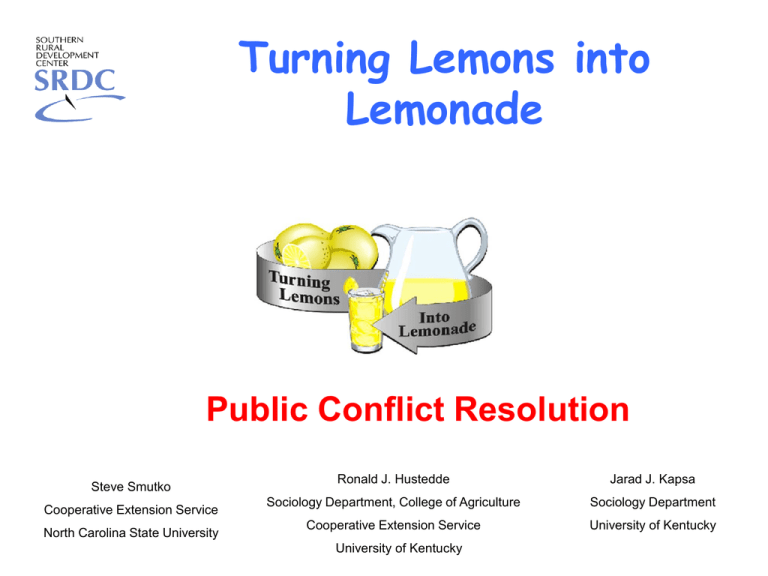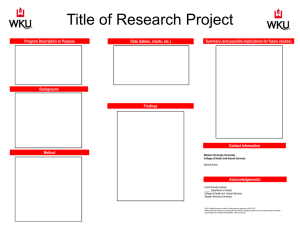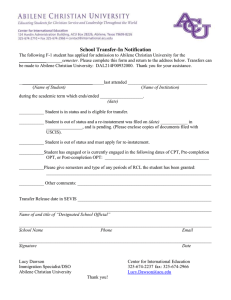Turning Lemons into Lemonade Public Conflict Resolution
advertisement

Turning Lemons into Lemonade Public Conflict Resolution Steve Smutko Cooperative Extension Service North Carolina State University Ronald J. Hustedde Jarad J. Kapsa Sociology Department, College of Agriculture Sociology Department Cooperative Extension Service University of Kentucky University of Kentucky 1 When you hear the word “conflict” what images come to mind? 2 • “The goal of organizational leadership is not to eliminate conflict, but to use it.” “Conflict is a predictable social phenomenon and should be channeled to useful purposes.” Source: Lippitt, Gordon, et.al, “Cutting Edge trends in organization • development,” Training and Development Journal, 1989. 3 Public Conflict • Dying communities and organizations avoid conflict or work on it in ways that destroy relationships. 4 Conflict • Successful communities and organizations anticipate conflict and work on it in ways that keep relationships intact. 5a Positive aspects of public conflict: • • • • • Problem addressed / action taken. Conflict resolved. Better long-term relationship. Stimulate creativity. Personal / professional growth. 5b Positive aspects of public conflict: • Strengthen democracy (Participatory problem-solving). • Change for “common good.” • Can live with solution. • Leadership emerges. • Community / organization growth. 6a Negative aspects of public conflict: • • • • • • No results. Little shared problem solving. Little creativity. Destroys relationships. Destruction of democracy. No sense of “we.” 6b Negative aspects of public conflict: • • • • • • Someone wins - someone loses. Unwillingness to work together. Expensive litigation. Community declines. Leadership declines. Loss of self-esteem. 7 Why accent the positive aspects? • “Shadow of the future” -- sustainable relationships. 8 Symptoms of the Abilene Paradox: • Failure to communicate real needs and beliefs. • Invalid and inaccurate information leads to counter productive results. • Members of group experience frustration (someone blamed). • Cycle. 9 Reasons for the Abilene Paradox: • Action anxiety. • Negative fantasies. • Failure to assess real risk. • Fear of separation. 10 Group think = False consensus • The group puts direct or subtle pressure on any member who questions group stereotypes, plans, goals or commitments. 11 Symptoms of group think: • Invulnerability - excessive optimism. • Discount warnings about inadequacies of group assumptions. • Unquestioned belief in group’s morality. • Stereotyped views of “enemies” as evil or dumb. • Share illusion of unanimity. • Self-appointed mind guards to protect group from adverse information.


